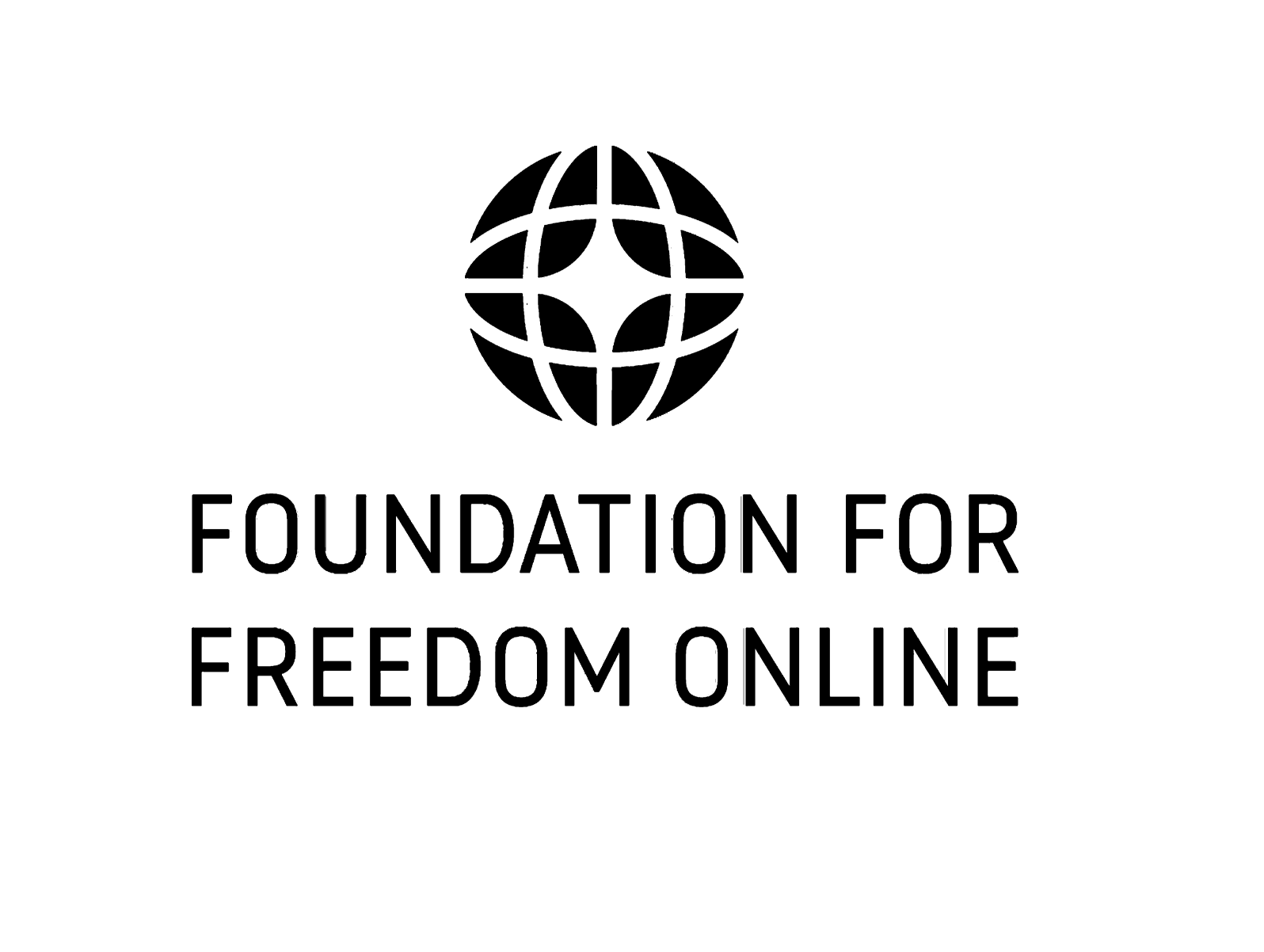SUMMARY
- Housed at DHS, the Federal Emergency Management Agency (FEMA)’s ostensible purpose is to help American communities respond to major disasters.
- FFO research has discovered that in the last 5 years, FEMA diverted to a new role: censorship and political indoctrination, by disbursing funds to Targeted Violence and Terrorism Prevention, a DHS “counter-extremism” program that has been systematically abused to censor the online opinions of Americans.
- This DHS program has been used to fund censorship initiatives that labeled theories about COVID’s origin in a Chinese lab as an example of “malinformation,” and labeled pro-life “suburban moms” as examples of domestic extremists.
- Since 2020, over $90 million has been awarded by TVTP across five funding cycles.
- $7 million of this budget was set aside for “media literacy” and “digital literacy” initiatives in schools, a field dominated by partisan organizations like the SPLC, which instruct students to avoid non-establishment information sources.
The Foundation for Freedom Online has previously revealed how the Department of Homeland Security (DHS) played a pivotal role in online censorship through its Cybersecurity and Infrastructure Security Agency. New FFO research has uncovered that DHS used another vehicle to advance online censorship: the Federal Emergency Management Agency (FEMA).
FEMA is listed as the awarding office and funding office for DHS grants awarded via its Targeted Violence and Terrorism Prevention program, an initiative which in recent years was weaponized against ordinary Americans to silence their political expression online, through the funding of “counter-disinformation” programs that targeted mainstream political speech.
DHS boasts of the scale of these efforts on its website:
Since 2020, the TVTP Grant Program has provided nearly $90 million across five funding cycles via 178 awards, training 38,250 people, and reaching 28,308,418 people across 41 states and the District of Columbia.
Analysis of public records [1, 2, 3] show that for TVTP grants, FEMA was listed as the awarding office, the awarding sub-agency, the funding sub-agency, and the funding office.
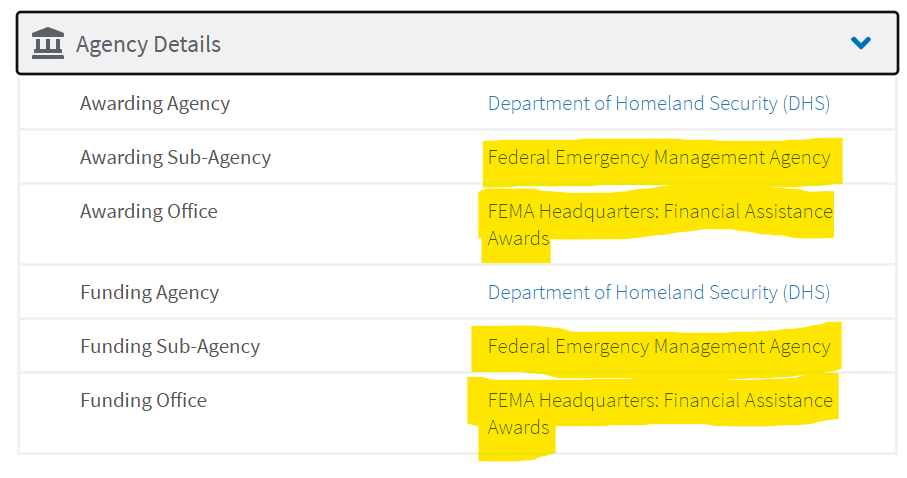
While some of the TVTP grants may target real extremism, many others are examples of U.S. government pushing online censorship and weaponizing its counter-extremism capacity against the American people. In one notable example uncovered by America First Legal in 2023, a TVTP-funded program labeled “suburban moms” with pro-life beliefs as an example of extremism.
As FFO previously reported, TVTP was also used to funnel $750,000 to the Wilson Center to develop “Defenders Against Disinformation,” an educational video game for children in grades 6 to 9, that pitted “superhero” governments against online disinformation and even “offensive speech.”
Another TVTP-funded program was How2Inform, a project led by professors from Lewis University in Illinois. How2Inform won its initial funding through the DHS and McCain Institute’s Invent2Prevent competition, another program which outwardly claims combating violence as extremism as its goal, but in reality has targeted ordinary political expression.
One example of this is How2Inform citing the lab leak hypothesis of COVID-19’s origins, now embraced by the U.S. government, as an examples of “dangerous misinformation”:
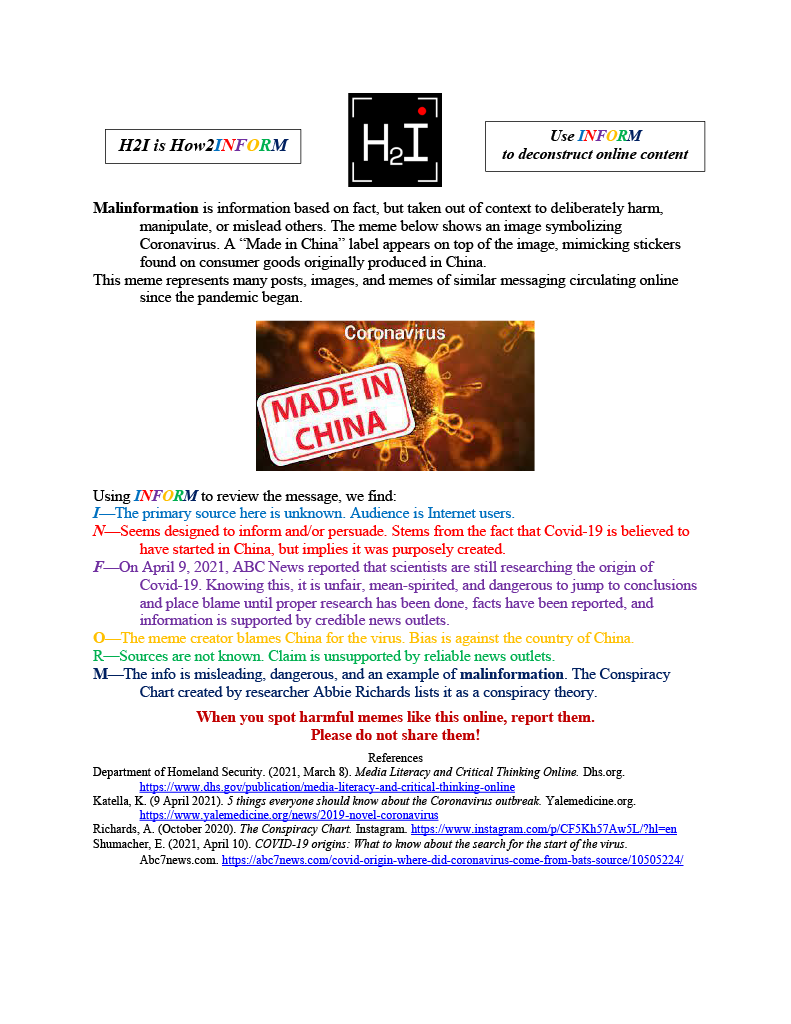
The Instagram page linked in How2Inform’s references contains a “conspiracy chart” which claims criticism of George Soros, the Deep State, and the international Antifa movement is “past the antisemitic point of return,” and on the same level as believing the earth is flat, hollow, and/or ruled by “reptilian overlords.”
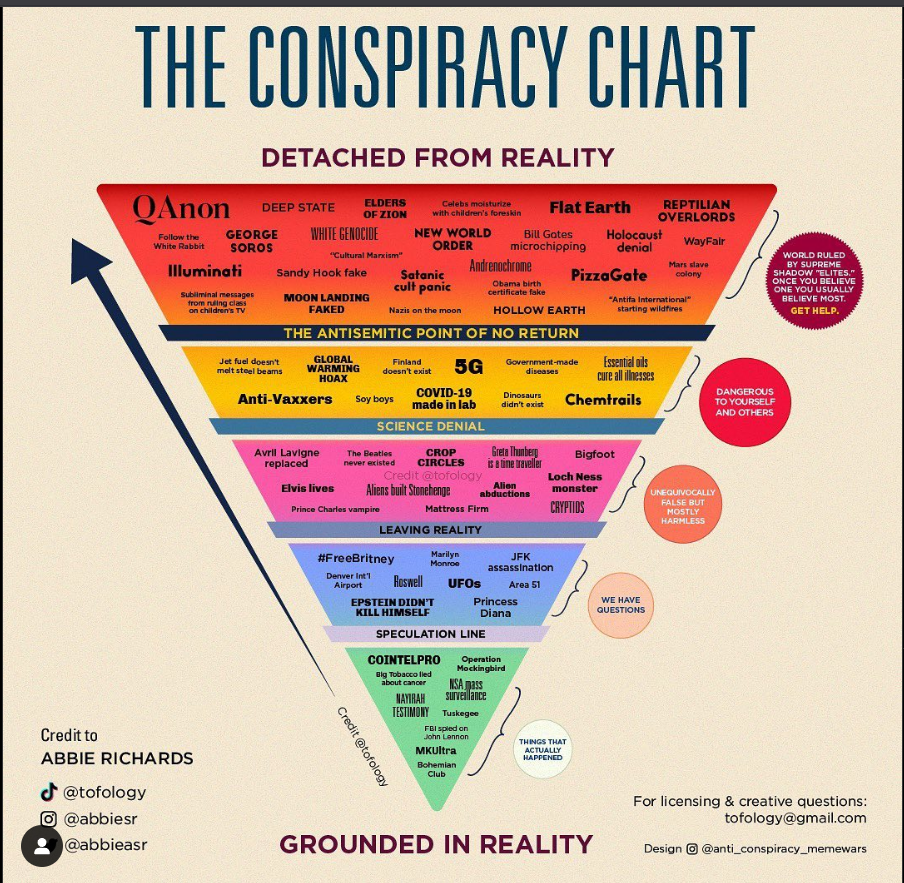
How2Inform additionally instructs educators to use the skewed Ad Fontes media bias chart to check which news sources are reliable. This chart controversially gives high grades to NBC, ABC, and CNN for low bias and high reliability, while flagging Fox News and the New York Post as hyper-partisan, unreliable sources.
In October 2022, How2Inform received $147,707 from the DHS TVTP program. According to their grant application, they wanted to use the funding “to establish and expand statewide media literacy initiatives.” They hoped to spread their media literacy resources to a target population of educators in all 102 counties in Illinois.
At the time of the grant application on the statewide level, Illinois recently required all public high schools to mandate media literacy education. Their DHS funding would effectively be used to train educators and direct them to their online resources to supplement these state mandates.
Media Literacy
In total, at least $7 million of the TVTP grant program was set aside to fund “media literacy” and “digital literacy” initiatives in schools. Both new fields, media and digital literacy have been pitched to the public as necessary instruction for schoolchildren in safely navigating digital environments. In reality, the field is dominated by pro-censorship organizations like NewsGuard, the Institute for Strategic Dialogue, and the Southern Poverty Law Center (SPLC), whose “media literacy” curricula are often just instructions to only consume information from the legacy establishment media.
An overt example of media literacy being used to smuggle indoctrination into schools through the 2022 TVTP grant program is Courageous RI, a project led by the University of Rhode Island’s Media Education Lab.
The University of Rhode Island’s Media Education Lab received $700,000 from FEMA to promote classroom censorship under the guise of training teachers to deploy media literacy curriculum.
According to Courageous RI, the DHS funding would be used “to reduce the hate that leads to violence by building a coalition of empowered people who recognize, analyze, and resist harmful forms of expression and communication.”
Ramona Bessinger, a Rhode Island teacher who was subject to Courageous RI’s media literacy training herself reported there was a “hyperfocus on maligning President Trump and his supporters.”
.Below is an example of the training teachers were reportedly subjected to during “breakout sessions” for the DHS funded media literacy training:
“In the breakout sessions, and project sessions, some teachers complained about their students with opposing views, according to one facilitator, these students were part of the”outer-group” and would need to be brought back into the “inner-group” specifically conservative students that may have outwardly expressed support for Trump, these students were considered “violent extremist MAGA republicans” in the making.”
The Media Research Center (MRC) documented the heavy indoctrination evidenced in Courageous RI’s own online educational material in a January 2024 report. MRC found the program was being run closely with Media Literacy Now’s “national network.” Media Literacy Now is perhaps the nation’s foremost media literacy lobbying force, with a goal of ensuring media literacy education is mandated across the United States.
Below are some examples from the MRC on how Courageous RI used DHS funds to promote censorship and target political opposition in classrooms, from their January 2024 report on the program. Courageous RI promoted their materials that did the following:
- Blamed shift towards Trump in the Latino community from 2016-2020 as disinformation.
- Program leaders proclaimed “content moderation” could never be censorship.
- Promoting Russiagate claims.
- A lesson plan recommended to program participants equated opposition to open borders with genocide an claimed Christianity historically promoted antisemitism.
- Using the DHS funding to commission anti Second amendment blog posts and promote censorship of Trump and political views.
- One blog post equated Marjorie Taylor Greene and MAGA supporters with Louis Farrakhan when proclaiming which figures to “tune out.”
Supplementing the Rise of Media literacy at the State Level
What do these examples of FEMA-funded TVTP “media literacy” projects have in common? They were implemented in Illinois, Washington, and Rhode Island – some of the very first states that made “media literacy” or “digital literacy” education mandatory in schools.
Projects in each state included a letter of support from school districts in their grant applications.
Lewis University’s How2Inform, Illinois:
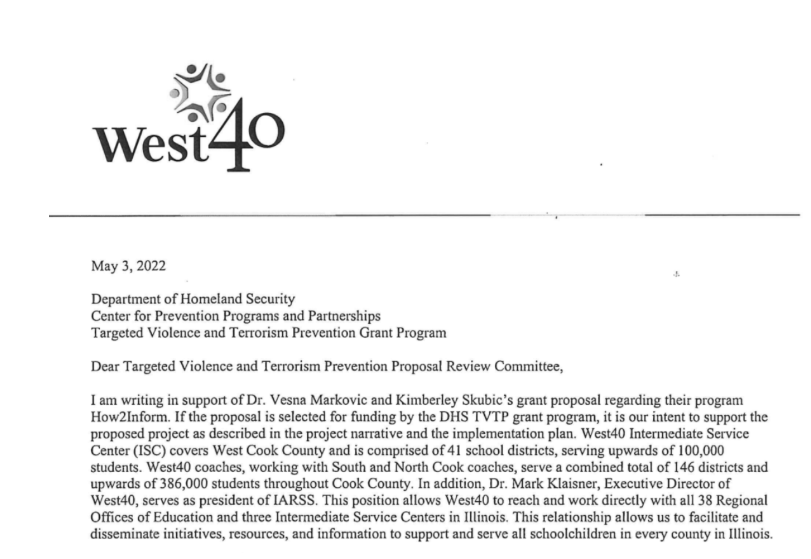
Wilson Center’s Defenders of Disinformation, Washington state:
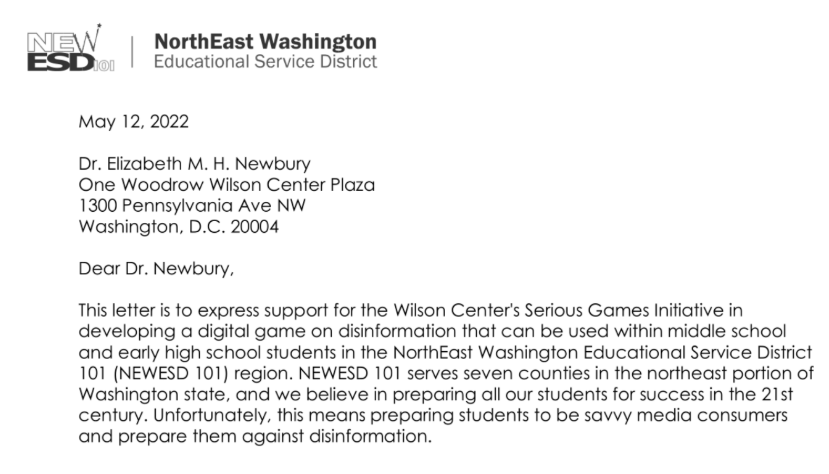
University of Rhode Island/Media Literacy Now’s Courageous RI, Rhode Island:
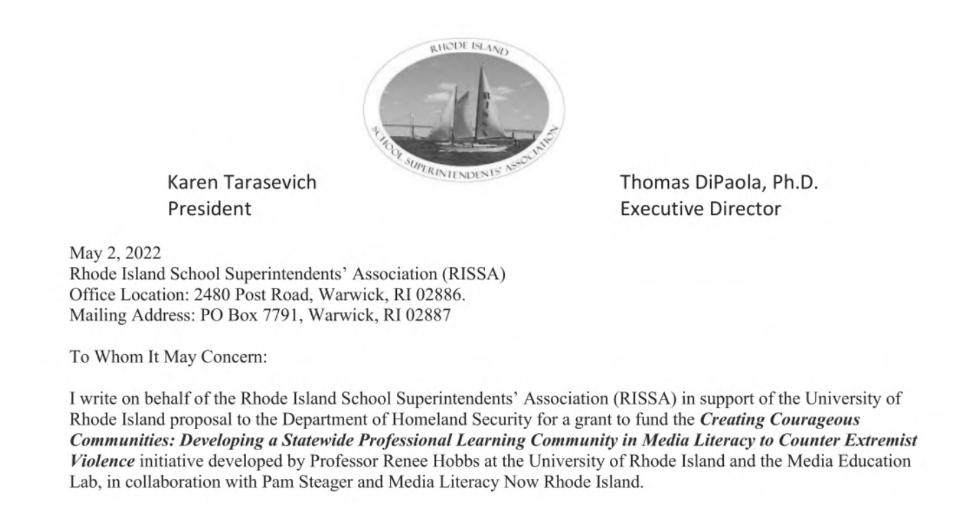
As demonstrated by the messages above, getting partisan “media literacy” courses into schools wasn’t just a state-level affair. DHS, through its FEMA-funded TVTP grants, strategically incentivized the creation of projects that seeped into the school system.
In the grant solicitation documents, DHS explicitly expressed that they would only accept projects that could turn into standalone school courses or become integrated into existing curriculum. DHS required grantees to have “ready access” to a school district, and attach an accompanying letter from that school district to their grant application to prove that the project would make it into classrooms upon completion.
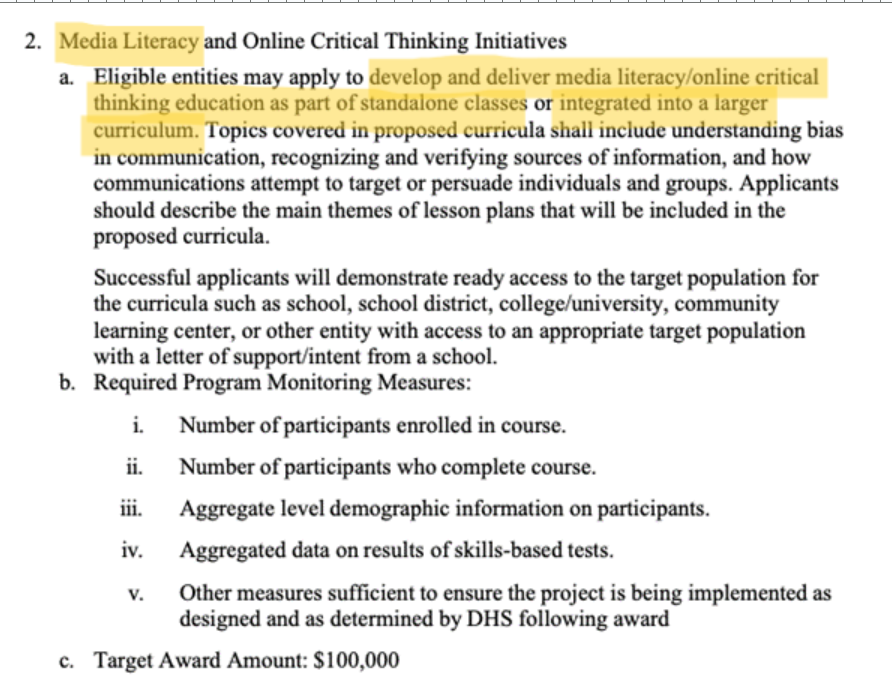
The Biden Administration’s Transatlantic Media Literacy Initiative
The spread of media literacy education was dispersed through a whole-of-society effort coordinated largely through the White House, intelligence agencies, and the government’s overseas funding conduits at USAID and the State Department.
After committing to releasing documents uncovering the Biden administration’s censorship and surveillance of Americans online, Director of National Intelligence Tulsi Gabbard declassified the Biden administration’s Strategic Implementation Plan for Countering Domestic Terrorism. The plan’s development was said to be informed by “intelligence and law enforcement communities in March 2021.”
Page 7 of the document reveals funding “digital literacy programming to combat online disinformation” as a priority of the government’s “countering domestic terrorism” plans. We see below that the Department of Homeland Security with the Department of Education, the State Department, and USAID were tasked with leading the “digital literacy” effort:
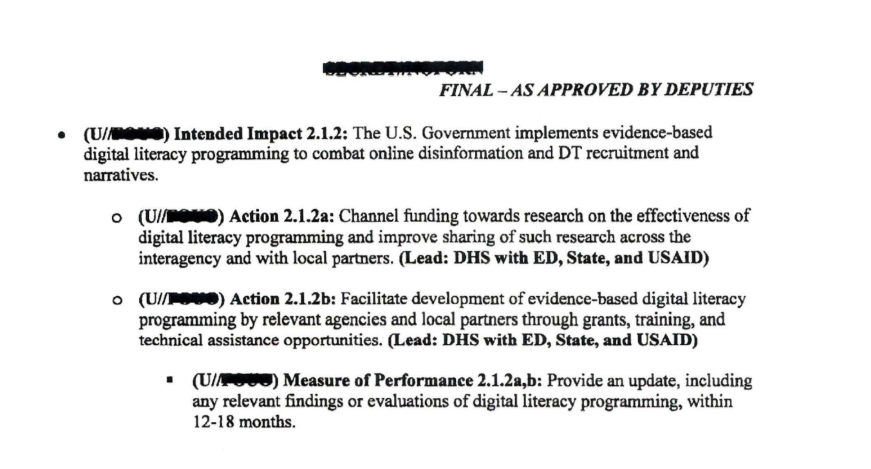
It’s unusual to see the Department of Education tasked with leading a counterrorism program, and the mention of DHS working “with ED” to lead “digital literacy programming” is striking. As mentioned previously, the DHS’s funding focus on media literacy seemingly honed in on supplementing the rise in media literacy curriculum mandates across the country.
While DHS and ED led the push for media literacy education domestically, FFO has uncovered how overseas censorship initiatives pushed through media literacy education were led by the State Department and USAID. This dynamic is precisely reflected in the leading agencies of the now-declassified “countering domestic terrorism” planning documents.
In March 2024, FFO’s investigation of USAID’s internal censorship planning documents revealed the agency saw the decline of traditional media “a loss of information integrity” that therefore required the concept of “media literacy” as the solution.
It is important to recognize that the foreign and domestic arms of the media/digital literacy apparatus built by the government served largely the same global purpose – to build up trust in the declining establishment media and institutions while censoring oppositional or populist sources.
We see the transatlantic cohesiveness of the media literacy field reflected in the government’s funding of the organizations involved for both foreign and domestic purposes. For example, the most prominent media literacy lobbying organization, Media Literacy Now (mentioned previously as playing a large role in running Courageous RI’s propaganda sessions), received a grant from the State Department to deploy their media literacy work in Germany in 2021.
“Whole Of Society”
Under the previous administration, the White House stated their goal of a “whole of society” push for information literacy through its Interagency Working Group on Information Integrity Research and Design. The working group, comprising 26 agencies and offices with involvement from some of the most private sector notorious censorship organizations, seemingly served as a hub of the previous administration’s dizzying whole-of-society censorship network.
In a December 2021 announcement, the White House proclaimed that they would be embarking on new efforts to accelerate the field of “Information Integrity” through this interagency working group. In their announcement, they boasted that a “Digital Literacy Accelerator” was being run out of the Department of Education “to identify promising school-based programs” to “combat misinformation.”
The 2021 Department of Education’s Digital Literacy Accelerator seemingly served as a precursor to the 2022 DHS program, used to pump FEMA funding into school-based censorship programs under the guise of countering domestic terrorism. Perhaps coordinating this directly out of the Department of Education would be too obvious. Using a counterterrorism program to fund such media literacy initiatives would give a level of insularity from the realization that the end goal was to inject censorship into schools.
The White House Information Integrity working group’s roadmap report document, released in December 2022, lists “enhanc[ing] education on media, digital, and information literacy” as priorities for the federal government.
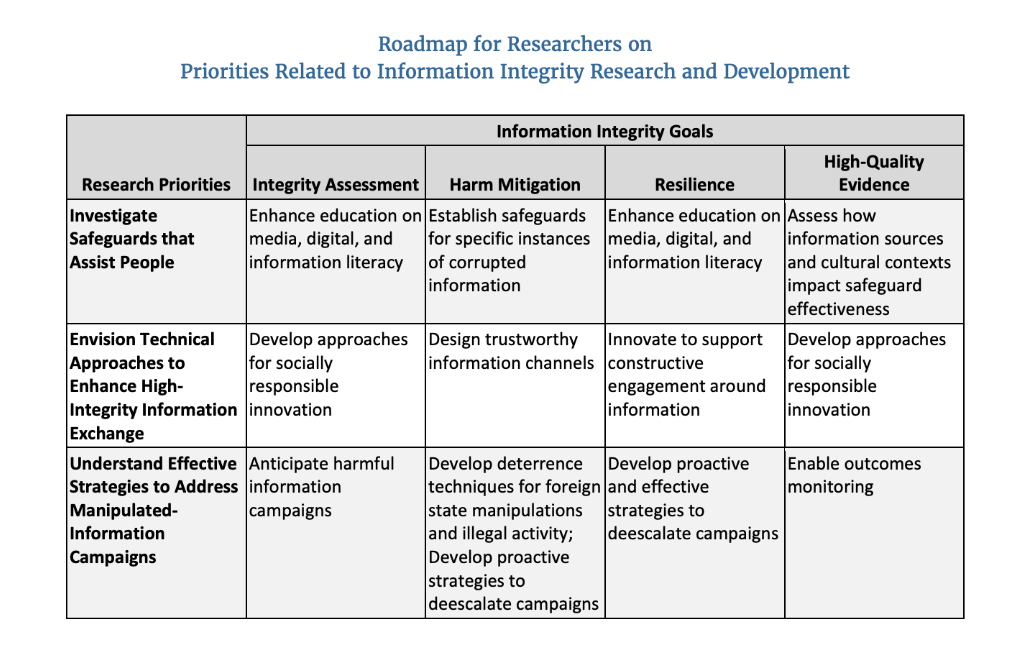
According to the White House, free speech could not run its course unchecked. In the very same roadmap report that includes the chart shown above, the White House called the “marketplace of ideas” an “aspirational concept” and “idealized notion.” They said “new mechanisms” were needed to “support high-integrity outcomes within the marketplace of ideas.” One of those “mechanisms” to engineer outcomes in the “marketplace of ideas”, as evidenced through their funding and stated plans, was proliferating media literacy education.
DHS and its Center for Prevention Programs (CP3), which houses the FEMA-funded TVTP program, were closely involved. In January 2022, DHS CP3 held a joint online forum with the Department of Education’s Office of Educational Technology on “Digital Ecosystems.” One panel from the forum on “improving digital literacy” featured representatives from the National Association for Media Literacy Education (NAMLE) and the News Literacy Project, two major proponents of media literacy education.
Despite the change in administration, “media literacy” has taken on a life of its own, particularly in the private sector where it is now backed by major corporate partners like Microsoft. At the state level, “media literacy” and “digital literacy” supporters continue to advocate to get their partisan materials into schools.

